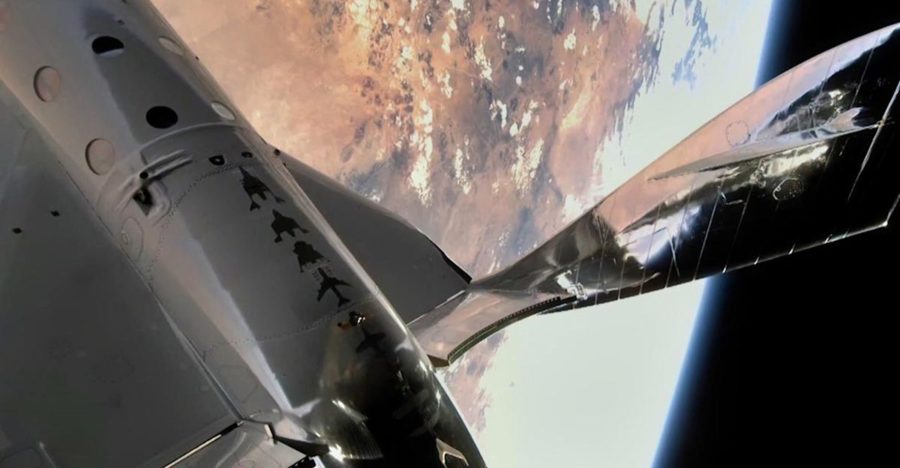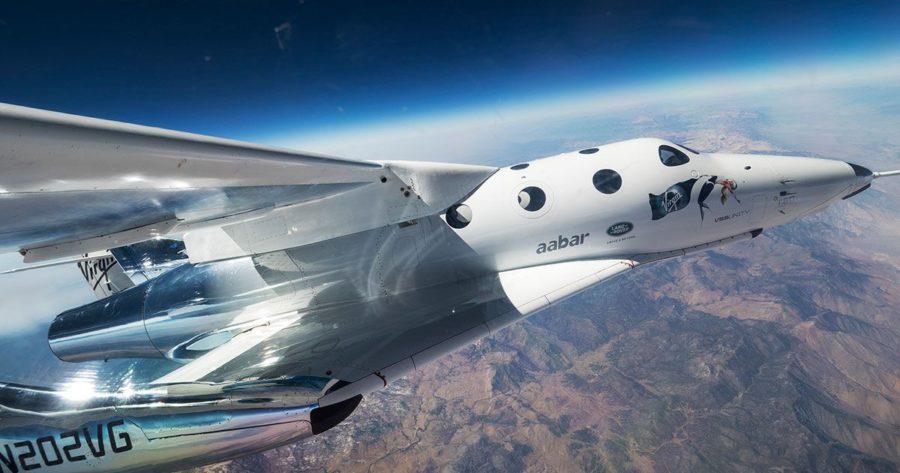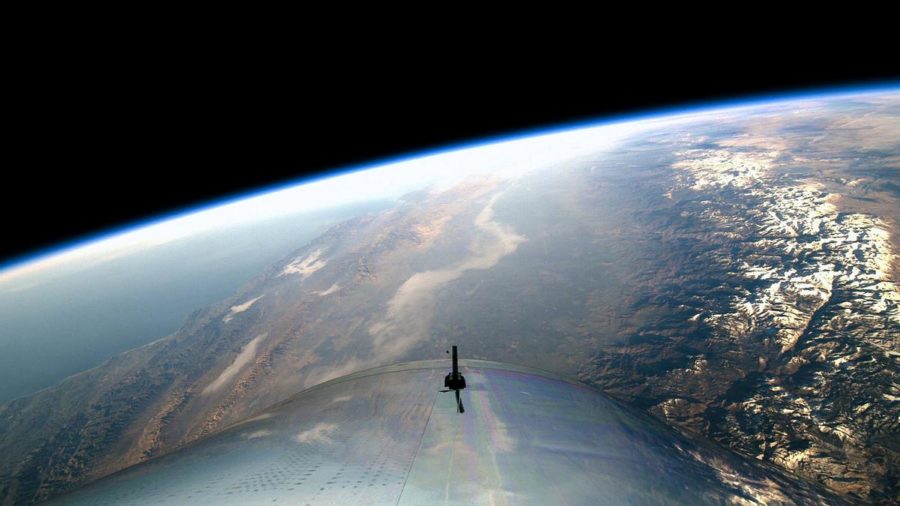Richard Branson’s Virgin Galactic space plane has conducted the first of three key test flights that should enable it to conduct commercial flight service to the edge of space.
The following written content from William Harwood

Virgin Galactic’s rocket-powered SpaceShipTwo carried two test pilots out of the discernible atmosphere Thursday, the company’s first piloted flight to the edge of space and a major milestone for Richard Branson’s plans to eventually launch tourists on brief, sub-orbital trips to space.
It was the fourth non-government, purely commercial flight to carry pilots out of the lower atmosphere and into the realm of space, the first since 2004, and the first by any piloted spacecraft built in the United States since the space shuttle’s final flight in 2011.
Did the crew make it all the way to space? The Air Force considers 50 miles up as the point where aerodynamic effects become insignificant and space begins. Virgin Galactic’s SpaceShipTwo reached an altitude of 51.4 miles during Thursday’s test flight.
The Fédération Aéronautique Internationale, the body that sanctions aerospace records, considers 100 kilometers, or 62 miles, as the boundary of space. By that standard, Virgin Galactic still has a way to go. However one counts it, Thursday’s flight was a major achievement for Branson’s space tourism program.
“Today, for the first time in history, a crewed spaceship, built to carry private passengers, reached space,” Branson said in a statement. “We will now push on with the remaining portion of our flight test program, which will see the rocket motor burn for longer and VSS Unity fly still faster and higher towards giving thousands of private astronauts an experience which provides a new, planetary perspective to our relationship with the Earth and the cosmos.”
Said George Whitesides, CEO of Virgin Galactic and The Spaceship Co.: “What we witnessed today is more compelling evidence that commercial space is set to become one of the twenty-first century’s defining industries. Reusable vehicles built and operated by private companies are about to transform our business and personal lives in ways which are as yet hard to imagine.”
Built by The Spaceship Co., Virgin’s SpaceShipTwo rocketplane, also known as VSS Unity, was carried aloft from the Mojave Air and Space Port by a twin-fuselage carrier jet known as WhiteKnightTwo and released at an altitude of about 43,000 feet.
A few seconds later, at 11 a.m. EST (GMT-5), pilot Mark Stucky and C.J. Sturckow, a former space shuttle commander, ignited the spacecraft’s hybrid rocket motor to begin a steep climb.

It was the fourth powered flight of the spaceplane, also known as VSS Unity, and it’s 15th overall since a devastating in-flight breakup in 2014 that destroyed an earlier model and killed one of its two pilots. Thursday’s flight was the company’s first featuring a long-duration rocket firing.
The flight appeared to go off without a hitch as the pilots guided the vehicle out of the thick lower atmosphere, shooting upward on a steep trajectory. The rocket motor shut down normally 60 seconds after ignition as the spacecraft coasted upward at 2.9 times the speed of sound.
The spaceplane climbed to an altitude of 271,268 feet, or 51.4 miles, according to a Virgin Galactic tweet, a new record for SpaceShipTwo.
Jonathan McDowell, an astrophysicist at the Harvard-Smithsonian Center for Astrophysics and a widely respected space analyst, recently authored a paper concluding 50 miles is indeed the point where, for a wide variety of reasons, the atmosphere stops being a factor in a vehicle’s aerodynamics. Read more from CBS





